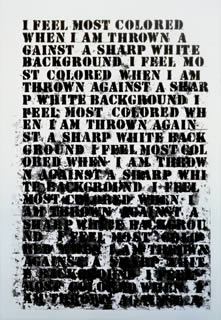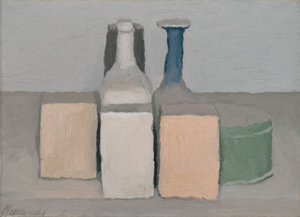5.16.25 — A Dangerous Crossing
Michael Armitage paints refugees on a dangerous crossing. Fortunately, they still have each other—unless that is the worst of the dangers.
For his latest work, he takes as his theme the passage from Africa, a theme that he must take personally. Born in Nairobi, he lives and works in London. Those who know his work will recognize the wild confusion of his narratives and the straight-on encounters in his portraits. More than before, though, that translates into political commitment and heart-felt sympathy, at David Zwirner through June 17. And I work this together with past reports on Elizabeth Catlett in black America and Jacob Lawrence, known for a very different Migration Series, as a longer review and my latest upload.
Armitage himself had a perfectly safe crossing—or as safe a crossing as an African can expect. He came to London to study at its finest art colleges, and he has made a successful crossing to America as well, appearing in a show of black artists at MoMA. He terms himself with a Kenyan Brit, and you can hear the confidence in his cultural heritage. Few are as certain that they can claim both Africa and the West. He paints on Ugandan bark and called his last show, in Germany, “Pathos and Twilight of the Idle,” challenging the uninitiated to spot the pun on Friedrich Nietzsche and Twilight of the Idols. If you feel a certain condescension, so be it.
The show is his “Crucible,” another boast. The Crucible is a play by Arthur Miller about the Salem witch trials, and Africans are dying because of prejudice now as well. Armitage asks to see a crucible as more than a watery journey. Its meanings broaden to the very concept of a dangerous passage and to metaphor. It returns the word to its more common meaning as a test or trial. People, he can hope, emerge stronger and more able to speak for themselves.
He calls a sculpture a near synonym, Trial, another boast of a European heritage. The Trial is a novel by Franz Kafka with a deadly ending, and here, too, individuals are caught in narratives that they may not survive and will never understand. I had not seen the artist’s sculpture before, but he places it first, with priority to its blackness. The cramped space of sculpture in low relief has its counterpart in the familiar space of his paintings as well. They include standing portraits and imaginings, in open waters, neighborhoods of London, and indefinite space. You may have to shift perspective after discovering which is which.
Three boys have found their way to shore at night, beneath turbulent clouds, stars, and artificial light. Should they take comfort in each other? Two of them hold the third, who can no longer to stand on his own—unless they are keeping him from finding escape. Friendships for Armitage are treacherous crossings, too. Sometimes small groups sit side by side, as eerie clusters of green, although flesh tones are normal enough. Shadows on naked flesh take an ominous shape, like skin that has away.
Distortions like these recall the agony in artists like Francis Bacon, R. B. Kitaj, and Lucien Freud. Armitage may have a British heritage after all. And that heritage extends to an all but exclusive focus on narrative and faces. I find that focus conservative and confining, like a test. Still, he has something that they do not, primary colors in daylight and blackness out of Africa. Just remember to rely on one another.
Read more, now in a feature-length article on this site.

